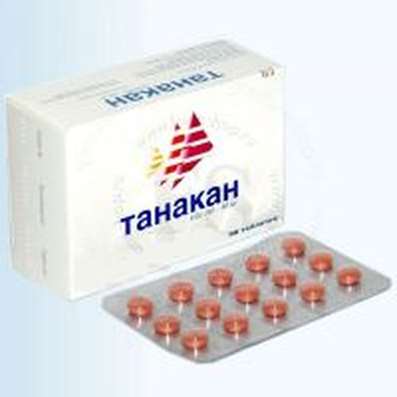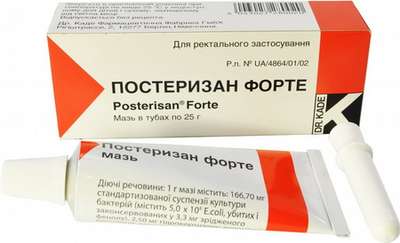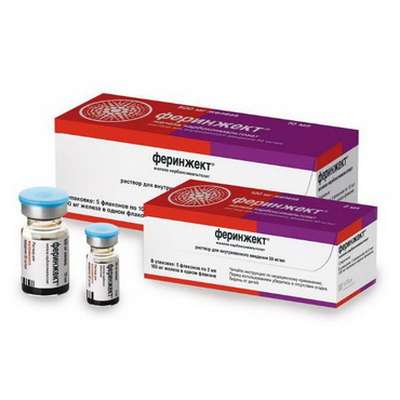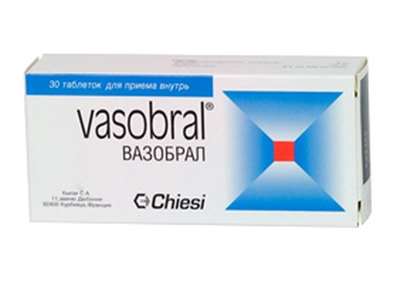Instruction for use: Propofol Fresenius
I want this, give me price
Dosage form: emulsion for intravenous administration
Active substance: Propofol*
ATX
N01AX10 Propofol
Pharmacological group:
Anesthetic means
The nosological classification (ICD-10)
Z100.0 * Anesthesiology and premedication: Abdominal surgery; Adenomectomy; Amputation; Angioplasty of the coronary arteries; Carotid artery angioplasty; Antiseptic treatment of skin in wounds; Antiseptic treatment of hands; Appendectomy; Atheroctomy; Balloon coronary angioplasty; Vaginal hysterectomy; Venous bypass; Interventions on the vagina and cervix; Interventions on the bladder; Interference in the oral cavity; Reconstructive-reconstructive operations; Hand hygiene of medical personnel; Gynecological Surgery; Gynecological interventions; Gynecological operations; Hypovolemic shock during surgery; Disinfection of purulent wounds; Disinfection of the edges of wounds; Diagnostic Interventions; Diagnostic procedures; Diathermocoagulation of the cervix; Long-term surgeries; Replacement of fistulous catheters; Infection in orthopedic surgical interventions; Artificial heart valve; Kistectomy; Short-term outpatient surgery; Short-term operations; Short-term surgical procedures; Cryotyreotomy; Blood loss during surgical interventions; Bleeding during surgery and in the postoperative period; Kuldotsentez; Laser coagulation; Laserocoagulation; Laser retinopathy of the retina; Laparoscopy; Laparoscopy in gynecology; Likvornaya fistula; Small gynecological operations; Small surgical interventions; Mastectomy and subsequent plastic surgery; Mediastinotomy; Microsurgical operations on the ear; Mukinging operations; Suturing; Minor surgery; Neurosurgical operation; Eclipse of the eyeball in ophthalmic surgery Orchiectomy; Pancreatectomy; Pericardectomy; The rehabilitation period after surgical operations; Reconvalence after surgical intervention; Percutaneous transluminal coronary angioplasty; Pleural Thoracocentesis; Pneumonia postoperative and post traumatic; Preparing for surgical procedures; Preparing for a surgical operation; Preparation of the surgeon's arms before surgery; Preparation of the colon for surgical interventions; Postoperative aspiration pneumonia in neurosurgical and thoracic operations; Postoperative nausea; Postoperative hemorrhage; Postoperative granuloma; Postoperative shock; Early postoperative period; Myocardial revascularization; Resection of the apex of the tooth root; Resection of the stomach; Bowel resection; Resection of the uterus; Liver resection; Small bowel resection; Resection of a part of the stomach; Reocclusion of the operated vessel; Gluing of tissues during surgical interventions; Suture removal; Condition after eye surgery; Condition after surgery; Condition after surgery in the nasal cavity;Condition after gastrectomy; Condition after resection of the small intestine; Condition after tonsillectomy; Condition after removal of duodenum; Condition after phlebectomy; Vascular Surgery; Splenectomy; Sterilization of surgical instrument; Sterilization of surgical instruments; Sternotomy; Dental surgery; Dental intervention on periodontal tissues; Strumectomy; Tonsillectomy; Thoracic surgery; Total gastrectomy; Transdermal intravascular coronary angioplasty; Transurethral resection; Turbinectomy; Removal of a tooth; Cataract removal; Removing Cysts; Removal of tonsils; Removal of myoma; Removal of mobile milk teeth; Removal of polyps; Removal of a broken tooth; Removal of the uterus; Removal of seams; Urethrotomy; Fistula of the luminal ducts; Frontoetmoidohaimorotomy; Surgical infection; Surgical treatment of chronic ulcers of extremities; Surgery; Surgery in the anus; Surgery on the large intestine; Surgical practice; Surgical procedure; Surgical interventions; Surgical interventions on the digestive tract; Surgical interventions on the urinary tract;Surgical interventions on the urinary system; Surgical interventions on the genitourinary system; Surgical intervention on the heart; Surgical procedures; Surgical operations; Surgical operations on veins; Surgical intervention; Vascular; Cholecystectomy; Partial resection of the stomach; Extraperitoneal hysterectomy; Percutaneous transluminal coronary angioplasty; Percutaneous transluminal angioplasty; Coronary artery bypass grafting; Extirpation of the tooth; Extirpation of infant teeth; Extirpation of pulp; Extracorporeal circulation; Extraction of the tooth; Extraction of teeth; Extraction of cataracts; Electrocoagulation; Endourological interventions; Episiotomy; Ethmoidotomy; Complications after tooth extraction
Composition
Emulsion for intravenous administration 1 ml
active substance:
propofol 10 mg
auxiliary substances: soybean oil - 100 mg; glycerol 22.5 mg; phospholipids of egg yolk - 12 mg; acid olein (for correction of pH) - 0,4-0,8 mg; sodium hydroxide (for pH correction) - 0.05-0.11 mg; water for injection - up to 1 ml
Description of dosage form
White homogeneous emulsion.
Pharmachologic effect
Pharmacological action - anesthesia.
Reduces cerebral blood flow and metabolism, intracranial pressure.
Pharmacodynamics
Causes a rapid (about 30 s) offensive medication sleep.
Prophylol Fresenius
General anesthesia (introductory and supporting anesthesia); maintenance of a sedative effect at carrying out of intensive therapy, IVL, surgical and diagnostic procedures.
Contraindications
Hypersensitivity.
Application in pregnancy and lactation
It should be refrained from using the drug during pregnancy and lactation (safety for newborns is not defined).
Side effects
During the induction of anesthesia: arterial hypotension, temporary apnea.
During the initial anesthesia: pain at the injection site, epileptiform movements (stored during anesthesia and awakening), including convulsions, opisthotonus, rarely - clinical signs of anaphylaxis (angioedema, bronchospasm, erythema, hypotension), thrombosis, phlebitis.
During the awakening period: nausea, vomiting, headache.
After prolonged use: discoloration of urine.
Other: pulmonary edema, postoperative fever, sexual disinhibition.
Interaction
Do not mix with any injectable solutions, except 5% dextrose, lidocaine hydrochloride for injection, alfentanil for injection.
With the introduction of muscle relaxants atrakury bezilate and myovac chloride, do not use the same system for intravenous administration as for the drug, without first washing it.
Dosing and Administration
Only IV. With the introduction of Propofol Fresenius, the doctor should have at his disposal a device usually used for general anesthesia, incl. means of monitoring the operation of the CVS (ECG, pulse oximetry) and resuscitation means.
The dose of Propofol Fresenius is selected individually, depending on the response of the patient to premedication. As a rule, when using the drug, additional administration of analgesic drugs is required.
General anesthesia in adults
Introductory anesthesia: for the induction of general anesthesia, propofol Fresenius is administered fractional (approximately 20-40 mg every 10 seconds) until clinical signs of anesthesia appear. The usual dose for adults under the age of 55 is 1.5-2.5 mg / kg. With continuous infusion, 0.3-4 mg / kg / h is administered. Do not exceed the infusion rate of 4 mg / kg / h.
In the older age, the required dose is generally reduced. In patients who meet the III and IV classes according to the classification of the American Society of Anesthetists (ASA), induction of anesthesia develops more slowly, which requires a slower administration of Propofol Fresenius: approximately 2 ml (20 mg) every 10 seconds.
Maintenance of anesthesia: when using Propofol Fresenius, maintenance of anesthesia is achieved either by continuous infusion or by repeated bolus injections.
To maintain anesthesia by continuous infusion, the dose and rate of administration are individually selected, usually 4-12 mg / kg / h of propofol are administered. In small operations, for example, with minimally invasive procedures, a smaller maintenance dose may be sufficient, approximately 4 mg / kg / h.
Reduction of the dose of Propofol Fresenius to 4 mg / kg / h is also recommended for elderly patients with hypovolemia and patients with grade III-IV ASA.
To maintain anesthesia through repeated bolus injections, propofol Fresenius should be administered at a dose of 25 to 50 mg, which corresponds to 2.5-5 ml of the drug. In elderly patients, rapid bolus administration is not indicated in connection with the possibility of cardiopulmonary depression.
General anesthesia in children older than 1 month
Because of the lack of experience with propofol, Fresenius should not be used in children younger than 1 month.
Introductory anesthesia: during induction, it is recommended that the dose be titrated before the appearance of clinical signs of the onset of general anesthesia. The dose should be adjusted to the age and / or weight of the patient. Induction of general anesthesia in children older than 8 years usually requires about 2.5 mg / kg. It is necessary to administer the drug slowly in repeated fractional doses until the appearance of clinical signs of general anesthesia. Children under the age of 8 may require a higher dose. The initial dose of Propofol Fresenius should be 3 mg / kg, and if necessary, 1 mg / kg may be added.
Because of the lack of experience in clinical use for young children from high-risk groups (III-IV severity of the ASA classification), lower doses are recommended.
Maintenance of anesthesia: to maintain anesthesia in children through continuous infusion, the recommended dose of Propofol Fresenius is 9-15 mg / kg / h. Children younger than 3 years may require a higher dose, in the recommended dose range, compared with older children. The dose should be selected individually, and especially should pay attention to the adequacy of anesthesia. The maximum duration of use should not exceed approximately 60 minutes, except for specific situations requiring longer use, such as malignant hyperthermia, when inhalation anesthetics can not be used.
Application of Propofol Fresenius as a sedative in the period of intensive therapy in adults
The dose is selected depending on the required depth of sedation. With the maintenance of general anesthesia, a dose of Propofol Fresenius 0.3 to 4 mg / kg / h is administered by continuous infusion. It is not recommended to use an injection rate higher than 4 mg / kg / h. When introducing fat emulsion to the patient, it is necessary to take into account that 1 ml of Propofol Fresenius contains 0.1 g of fat.
Propofol Fresenius should not be used as a sedative in children under 16 years of age.
Elderly patients, patients with heart, respiratory, kidney or liver diseases, as well as patients with hypovolemia and epilepsy. Propofol Fresenius should be administered at a reduced rate.
Methods of administration
Allowed the infusion of Propofol Fresenius in undiluted form. Propofol Fresenius dilution is recommended only 5% glucose solution for intravenous administration or 0.9% solution of sodium chloride for intravenous administration in glass bottles.
Shake before use!
Use only a homogeneous emulsion from an intact container. Before use, the rubber membrane of the container or neck of the ampoule is sprayed with alcohol spray or wiped with a swab dipped in alcohol.
Since Propofol Fresenius is a fat emulsion that does not contain a preservative and does not have antimicrobial activity, the preparation can serve as a favorable medium for rapid growth of microorganisms. When opening a vial or ampoule containing Propofol Fresenius, you must strictly follow the rules of asepsis. The preparation should be started without delay.
During the entire period of administration of Propofol Fresenius, the rules of aseptic work with the drug and the system for parenteral infusion should be observed. With the simultaneous injection of Propofol Fresenius with other drugs and solutions in the same system, the introduction of the latter is recommended to be made closer to the cannula. Propofol Fresenius can not be administered via a microbiological filter. Propofol Fresenius and other infusion systems containing propofol are for single injection or infusion only one patient individually.
Infusion of undiluted Propofol Fresenius
When infusion of undiluted propofol Fresenius is recommended to always use devices to control the volume of the drug administered, such as a drop counter, syringe pumps or volumetric infusion pumps.
With the introduction of fat emulsions, incl. and Propofol Fresenius, the same infusion system is recommended to use no more than 12 hours. After 12 hours of use, the system containing Propofol Fresenius or the container with the drug should be replaced.
Infusion of diluted Propofol Fresenius
For the introduction of diluted Propofol Fresenius it is possible to use different versions of IV infusion systems. However, the use of standard systems does not guarantee against the random uncontrolled introduction of large volumes of diluted Propofol Fresenius. In the system for IV infusions should include devices to control the volume of the drug, such as the drop counter, burette or volumetric pump for infusion. When determining the maximum dilution of burette contents, one should take into account the risk of administering large doses of propofol. Recommended Propofol Fresenius dilution is 1 part propofol and 4 parts 5% glucose solution for intravenous administration or 0.9% sodium chloride solution for IV administration (the active ingredient content in the diluted solution should not be less than 2 mg / ml ). Breeding is prepared in aseptic conditions immediately before the administration of the drug, the infusion should be completed no later than 6 hours after the preparation of the dilution. Propofol Fresenius should not be diluted with other solutions for infusions or injections. Co-administration of 5% glucose solution, 0.9% solution of sodium chloride with Propofol Fresenius is allowed through a tee with a valve in the immediate vicinity of the place of administration of the drug.
To reduce soreness at the site of administration of Propofol Fresenius, it is permissible to mix it immediately before administration with a 1% solution of lidocaine hydrochloride for injection (20 h. Propofol Fresenius and 1 part 1% solution of lidocaine hydrochloride for injection) free from preservative.
Preparations of muscle relaxants such as atrakury bezilata and miakuriya chloride can be administered at the site of administration of Propofol Fresenius only after jet washing.
The introduction of the emulsion of Propofol Fresenius should be started immediately after opening the ampoule or vial.
The system for the introduction of undiluted propofol Fresenius should be replaced at the end of the 12-hour period after the opening of the ampoule or vial. Propofol Fresenius dilutions 5% glucose solution for intravenous administration or 0.9% sodium chloride solution for IV administration should be prepared under aseptic conditions immediately before infusion, their administration should be completed within 6 hours after the preparation of the dilution.
Any residues of the contents of ampoules or vials after use should be destroyed.
Overdose
Symptoms: depression of cardiac activity and respiration.
Treatment: the patient's head should be lowered; if necessary, the introduction of plasma substitutes and vasopressor agents. Conduction of mechanical ventilation and oxygen therapy.
Precautionary measures
It is not recommended to use in childhood for introductory anesthesia (children younger than 3 years) and to provide a sedative effect. Children older than 8 years for an initial anesthesia will probably need a dose of 2.5 mg / kg, less than 8 years - a higher dose is possible. They are used with caution for narcosis in patients with epilepsy (convulsions may develop), diseases of the cardiovascular system, kidneys, liver, respiratory organs, hypovolemia, severely weakened. When maintaining anesthesia through continuous or bolus administration in patients with lipid metabolism disorders, it is necessary to monitor the lipids in the blood and, as they increase, reduce the dose.
Release form
Emulsion for intravenous administration, 10 mg / ml. For 20 ml in ampoules of colorless glass (Ph. Eur.), Marked with a dot, 5 ampoules are placed in a cardboard pack.
For 50 or 100 ml in bottles of colorless glass, corked with rubber (brombutyl rubber) stopper and rolled with an aluminum cap with a plastic cap to control the first opening (Ph. Eur.). 1 or 10 bottles are placed in a cardboard box.
Conditions of leave from pharmacies
On prescription.
Use only in hospital settings.
Storage conditions for Propofol Fresenius
At a temperature of no higher than 25 ° C. Do not freeze!
Keep out of the reach of children.
Shelf life of Propofol Fresenius
3 years.
Do not use after the expiry date printed on the package.

 Cart
Cart





